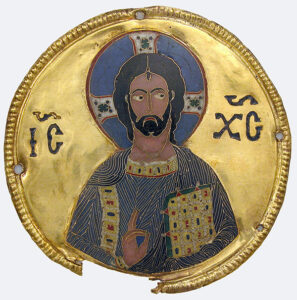Overview
My research explores how Christians made use of biblical texts and figures to advance their own agendas through the first five centuries CE. Increasingly, my research emphasizes the role invention and deception in these processes. In their attempts to lay claim to biblical materials and establish a discursive authority over them, early Christians employed such strategies as writing under false names, embellishing historical accounts, and fabricating relics. I’m interested in why they utilized these strategies and why these techniques were so often successful.
Since my interests span multiple centuries, I consider myself at home in both New Testament studies and Early/Late Ancient Christian studies, and I actively publish in both fields. Today, I’m especially engaged in two lines of research. The first looks at disguised authorship within the many ancient books attributed to John, the disciple of Jesus. The other explores how late ancient Christian cities lay claim to biblical texts and figures, not least through many of the practices listed above.

The Biblical and Apocryphal Books of John
I am currently engaged in a dramatic rethinking of the so-called “Johannine literature”—one that casts the biblical books of John, 1 John, 2 John, and 3 John as a series of falsely authored texts. In The Gospel of John: A New History (Oxford, 2025), I argue that the author of John chose to correct and supplement earlier gospels by drafting his own account of Jesus, one he deliberately misattributed to an invented disciple of Jesus. More importantly, I propose that this Gospel inspired an entire tradition of falsely authored works in the persona of that disciple. A second book, The Epistles of John: Origins, Authorship, Purpose (Cambridge, forthcoming), demonstrates that the letters of 1, 2, and 3 John stand within the same tradition of disguised authorship.
This new vision of the origins of the Gospel and Letters of John has led me to rethink many other aspects of these biblical books, including their interpretation, purpose, literary qualities, reception/cultural history, and relationship to other works. For example, in the above two books, I suggest Paul’s influence on all the Johannine works. I read John as a text that encodes a complex theological vision—a vision of spirit-implantation, celestial access, and deification—in its narratives and discourses. I also recast 1 John as a Christian work devoted to a unique idea of sinless perfectionism.

The Biblical in Late Antiquity
A second segment of my work explores the many ways late ancient Christian communities lay claim to biblical texts and figures. In the newly Christianized Roman Empire of the fourth and fifth centuries, cities seeking to bolster their prestige drew on the fame of local martyrs to claim importance for themselves as spaces. Rome famously articulated its identity around Peter and Paul, while Constantinople claimed the legacy and relics of Andrew. In my first book, The Cult of Stephen in Jerusalem: Inventing a Patron Martyr (Oxford, 2022), I demonstrate that church officials in Jerusalem worked for several decades to position Stephen in a similar role, projecting this claim through ritual practices, invented memories, fabricated relics, and monuments.
I have also written several pieces branching from this project. These include studies of various late ancient martyr cults and re-examinations of important liturgical/ritual sources.
